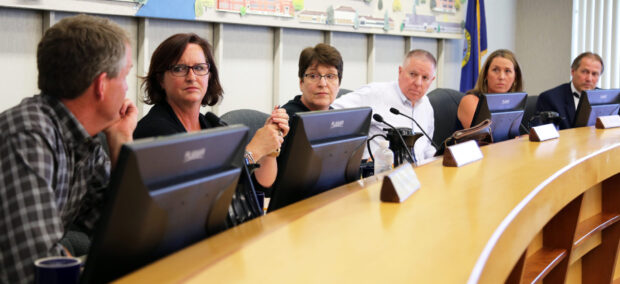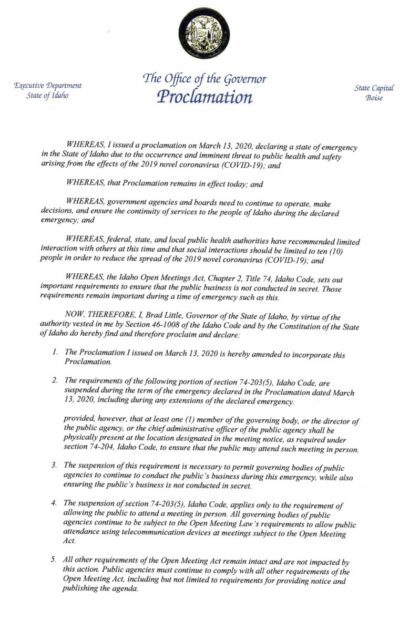
In the week after Gov. Brad Little signed an emergency declaration to combat the spread of coronavirus, he added an amendment that suspends part of Idaho’s open meetings act.
The change, which remains in force while the coronavirus emergency proclamation is in effect, waives a requirement that the public must be able to attend public meetings in person. But agencies have to allow “public attendance using telecommunication,” such as online streaming or a phone conference.
That means your local Idaho school board is allowed to meet virtually.
The proclamation follows federal guidance that Americans limit gatherings to fewer than 10 people, and maintain six feet of distance, to help prevent the spread of the novel coronavirus. Marissa Morrison Hyer, Little’s press secretary, said people at multiple levels of government had asked for the in-person meeting waiver.
“The suspension of this requirement is necessary to permit governing bodies to continue to conduct the public’s business during this emergency, while also ensuring the public’s business is not conducted in secret,” reads the proclamation, signed on March 18.
School boards (and other agencies subject to public meeting law) still have to post regular notice for their virtual meetings, and provide a description for how the public can access that meeting.
The Idaho School Boards Association and Idaho Digital Learning Alliance have been developing training for school boards to navigate the new terrain.
Karen Echeverria, ISBA’s executive director, recommends school boards use a platform such as Zoom or Google meetings because teleconferencing is harder to navigate.
“As long as they allow for some sort of entry into the meeting — even if it’s a listen-only teleconference, then they have complied with the conditions of the law,” Echeverria said.
ISBA also “strongly suggests” school boards allow for public comment (which they are not legally required to do). They could do that, Echeverria said, by asking people to submit public comment before the meeting, then acknowledging any submissions during the meeting and adding those into the meeting record.
Will Goodman, director of district programs at IDLA, said another option is for districts to ask commenters to use functions such as the “raise your hand” button on Zoom, which would allow the district to selectively un-mute meeting participants.
Zoom also allows school boards to host a private executive session, without losing the public on a call. IDLA recorded a webinar this week to explain these functions for boards interested in using Zoom.
Asked about public access to these meetings, Goodman said, “In-person meetings are usually best.” But given the circumstances, he sees Zoom meetings as a good fix. He suggested districts advertise their virtual meetings as widely as possible, on their social media platforms and websites.
“I think it’s a great temporary solution,” he said. “I think it’ll be useful so that boards can meet while maintaining that social distancing and maintaining that stay-at-home order, but also allow school districts to continue their business.”
